MacBook Air Review (mid-2013)
11:43
The MacBook Air hardly needs an introduction. It
started the Ultrabook craze before Intel coined the word "Ultrabook" as a
way to gain PCs some market share and encourage manufacturers to
produce good looking, light laptops in the face of Apple's challenge.
The mid-2013 MacBook Air gets special notice because it's one of the
first ultraportables to run the new fourth generation Intel Haswell CPUs
(the Sony Vaio Pro
is the only other Ultrabook with Haswell at the time of the new Air's
launch, and the Sony Vaio Duo 13 convertible will follow in a few
weeks). While we've seen a few desktops and gaming quad core machines
with Haswell, they're largely the least to benefit because Haswell's
improvements particularly target Ultrabooks and thin and light laptops
where they can amp integrated graphics and bring significant battery
life improvements. The MacBook Air, much like the Sony Vaio Pro 13
Ultrabook and Vaio Duo convertible, stand to gain the most. As it turns
out, the Air gains a bit more in the graphics department since it uses
the faster Intel HD 5000 graphics rather than HD 4400 graphics found in
the Vaio Pro. Don't get too excited, because as it turns out neither HD
4400 nor HD 5000 come anywhere near dedicated graphics performance
(watch our video review below where we play Diablo 3). We're talking a
few percentage points and 5-7 fps gains in demanding 3D games.
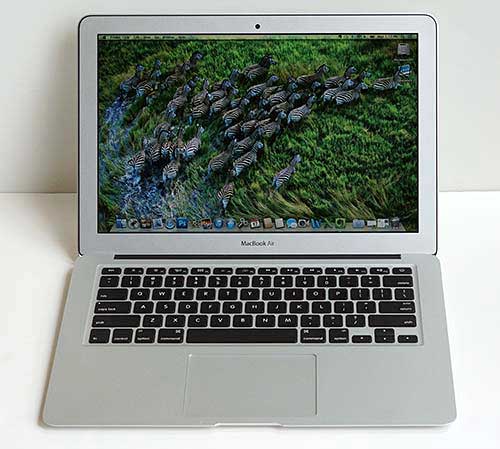
So how about CPU performance
improvements? These are small compared to the outgoing third generation
Ivy Bridge platform, but they're impressive because they slightly
outperform Ivy Bridge while running at lower clock speeds and consuming
less power. The mid-2013 MacBook Air isn't a genius compared to the
outgoing model in terms of CPU performance, but it does show gains in
graphics thanks to Intel HD 5000 graphics, and better yet it runs even
cooler and much longer. Part of that battery life improvement is thanks
to Apple increasing the battery size a bit; the 13" MacBook Air has a
whopping 7150 mAh battery that's larger than most Ultrabook batteries
(the Vaio Pro 13, whose goal in life is to be super-thin and 3/4 lb.
lighter than the MacBook Air has a 4740 mAh battery). Our review unit is
running on the 1.7GHz Intel Core i7-4650U, while most reviews cover the
1.3GHz Intel Core i5-4250U, yet battery life is still amazing. We're
talking 10 to 12 hours at 50% brightness with WiFi on in a mix of
productivity tasks plus some YouTube and Netflix streaming. No external
sheet batteries or clip on barrel battery required.
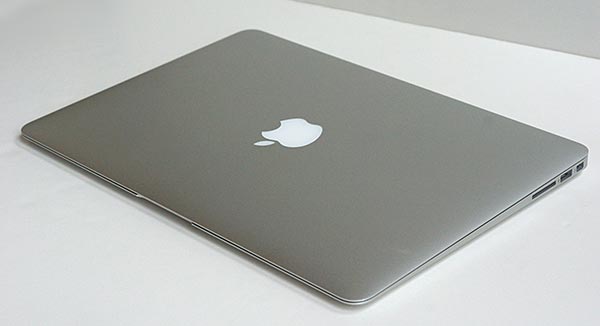
Intel fourth generation Ultrabook ULV
CPUs are paired with Intel HD integrated graphics. There are two
versions: Intel HD 4400 and HD 5000. The HD 5000 is the faster of the
two, and while it shows a modest improvement over Ivy Bridge HD 4000
graphics and is a few points faster than the HD 4400, it won't compete
with anything beyond a low end dedicated graphics offering. The MacBook
Air has never been a gaming or CAD workstation machine, but the Haswell
MacBook Air does gain 5-8 frames over the HD 4000 and HD 4400 in some
current popular 3D games like Diablo 3 and Civ 5. The gain is sufficient
to make these games playable as long as you go for lower resolutions
and graphics settings. Apple offers only the faster HD 5000 graphics on
the MacBook Air, and it's matched with slightly slower clocked CPUs to
keep the power requirement at 17 watts total, which is Haswell's power
cap for the CPU and GPU combined. If most of your work is CPU intensive
(calculations, compiling software), then this offers less of an
advantage. However, if you do play games or depend on Adobe Photoshop's
use of the GPU, the Intel HD 5000 is more attractive. If you need more
computing power, the full mobile CPUs in the 13" MacBook Pro with Retina
Display offer considerably more. The dedicated graphics plus full
mobile CPUs in the MacBook Pro 15" and 15 inch MacBook Pro with Retina
Display are good for serious computing plus good gaming with dedicated
graphics. Of course, those Mac models are larger, heavier and more
expensive than the MacBook Air.
Tried and True
The rest is the same old MacBook
Air 13" that we know and love. The design is unchanged from the last
generation model, and it has two USB 3.0 ports (one on each side), a
Thunderbolt port that also functions as a mini DisplayPort, 3.5mm audio,
MagSafe 2 charging connector and an SDXC card slot. It weighs 2.96
lbs., is clad in curvy silver aluminum, has a large glass trackpad
that's as good as it gets and a good backlit keyboard. There's a webcam
for Skype and FaceTime video chat, and new for this model are dual
built-in mics. Build quality is always superb with Apple computers and
the Air is an essay in visual perfection. There are no gaps, pointless
angles or creaking and the casing is extremely rigid (I'd hate to drop
it on my foot). Our only complaint with the MacBook Air is that the
front edge feels sharp against the palms when typing.
Display: Same as it Ever Was
The gloss display's resolution
stays at 1440 x 900, which hurts a bit in the face of today's premium
1920 x 1080 and higher Windows 8 Ultrabooks. My guess? Apple didn't want
to cannibalize the Retina line of Mac laptops, and a full HD display
would drag down that record-setting battery life. Obviously there's no
touch screen here, Apple doesn't do that (at least not yet). That's not
to say this is a bad display, rather it's quite good. Viewing angles are
comfortably wide (except when viewed from below, but few people sit
lower than their laptop) and colors are pleasing. Movies look bright and
color saturated and there's sufficient sharpness to make text look
good. Those who've grown accustomed to Apple's much higher PPI Retina
displays will likely think that text looks a tad fuzzy, but those who've
been using standard resolution laptops will find it very good.
This isn't a wide color gamut
display that you'll find on some high end laptops like Apple's own
Retina 13 and 15 inch models that cover 99% of sRGB or the Sony Vaio Pro
13 that covers 95% of sRGB. The 13" MacBook Air covers 67% of sRGB and
51% of Adobe RGB. At 300 nits, it's as bright as the Retina Macs and
brighter than the 250 nit Sony Vaio Pro 13, but contrast is lower at
550:1 in our tests vs. 900:1 or higher for the Vaio and Retina. That's
decent contrast and the display doesn't look washed out, but blacks
aren't as rich and black on white text isn't as crisp compared to the
Retina and Vaio Pro. Contrast is above the industry average though, as
is brightness.
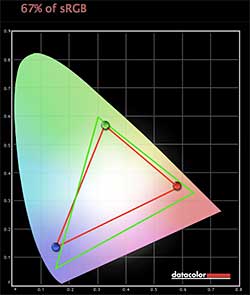
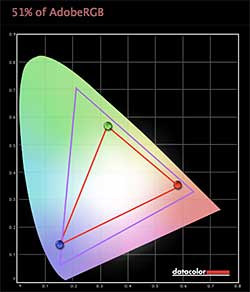
Pricing and Configurations
The 13" MacBook Air starts at
$1,099 for the 1.3GHz Intel Core i5 with 4 gigs of DDR3 RAM and a 128
gig SSD drive (now using the significantly faster PCIe interface). You
can get the machine with the 1.7GHz Intel Core i7, 8 gigs of RAM and a
256 or 512 gig SSD drive. The Core i7 with 8 gigs of RAM and a 256 gig
SSD costs $1,549. For those of you who really love traveling small, the
MacBook Air 11" ($999 base price) is available with Haswell and Intel HD
5000 graphics too. Battery life is lower at 9 hours according to Apple
because 11.6" notebooks don't have room for as large a battery as their
13" brethren.
The Competition
If you're a Mac person, the choice
is between the 13" MacBook Pro with Retina Display and the MacBook Air.
The 13" Retina is heavier at 3.57 lbs. and more expensive at $1,499
(base price), but you get a much better display and faster full mobile
CPUs in trade. If you're looking for extreme portability and the least
expensive Mac you can buy, the MacBook Air is the better choice. Both
can handle productivity work with MS Office, email, web, streaming HD
video playback and image editing perfectly well. Neither is well suited
to gaming since both models use integrated graphics. You can play casual
games on either, but you'll have to resort to lower resolutions and
settings for current 3D titles. Of course, there's the standard 4.5 lb.
13" MacBook Pro which offers a full mobile CPU and Intel integrated
graphics like the Retina, but it adds a built-in DVD drive, Ethernet and
FireWire 800. It's the heaviest of the three, and has a lowly 1280 x
800 resolution display (really, Apple?). That said, if you need an
all-around laptop that can be your one and only machine, the base $1,199
MacBook Pro has all the creature comforts like plentiful ports, an
optical drive and a fast CPU for a relatively low price by Apple
standards.
And how about the world of
Windows? I generally don't recommend a Mac If you plan to run Windows 7
or 8 most of the time. Apple's Windows drivers aren't nearly as good as
their Mac OS X counterparts. Power management and the trackpad, which
are two highlights under Mac OS X become mediocre under Windows using
Bootcamp. If you only sometimes need Windows, then a Mac is fine (via
Bootcamp or Parallels).
For those of you who are Windows
users, you've got a great selection of Ultrabooks to choose from. A few
years ago the Air had a significant lead but now the Asus Zenbook Prime UX31A Touch, the Sony Vaio Pro, Dell XPS 13 FHD, Samsung ATIV Book 7 and Samsung Series 9
(also called ATIV Book) are compelling alternatives with classy
designs, full HD displays, touch screens and good backlit keyboards.

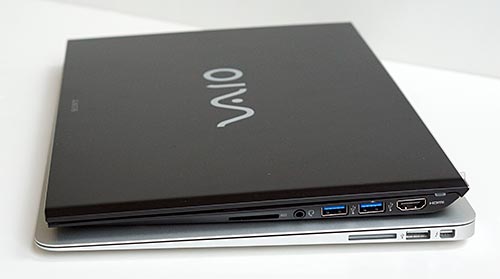

0 comments